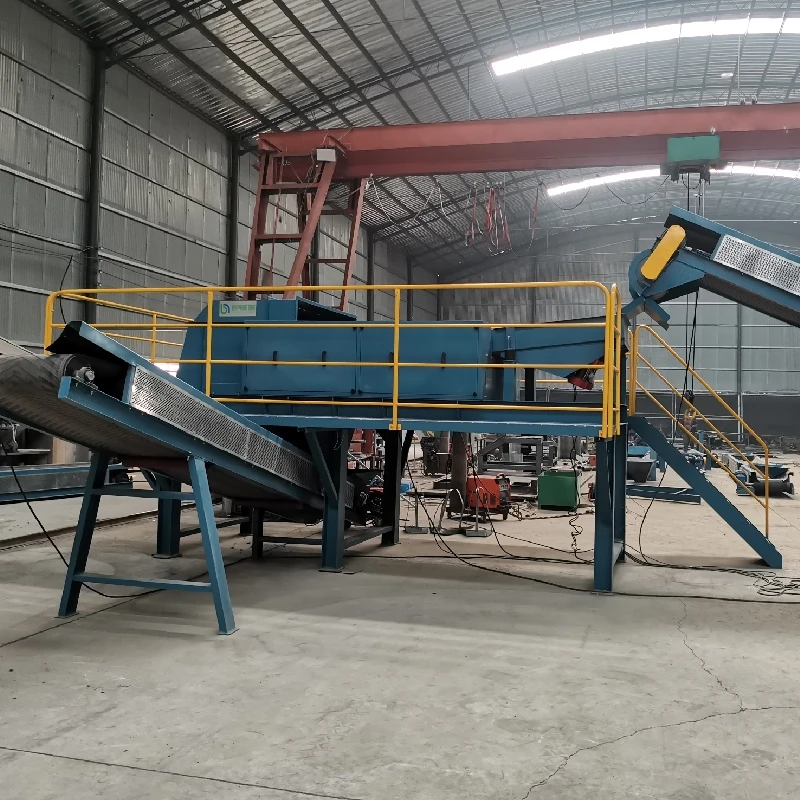

ພ.ຈ. . 08, 2024 13:37 Back to list
The Importance of Construction Waste Shredders in Sustainable Building Practices
In an era where environmental sustainability is becoming increasingly critical, the construction industry is facing significant pressure to minimize waste and optimize resource use. A vital tool in achieving this goal is the construction waste shredder, an innovative machine designed to process and reduce the volume of waste materials generated on construction sites. This article explores the importance of construction waste shredders, their operational mechanics, and their contribution to sustainable building practices.
Understanding Construction Waste
Construction waste encompasses various materials, including concrete, bricks, wood, metal, and plastics, resulting from building demolition, renovation, or new construction activities. Traditionally, a significant percentage of this waste ends up in landfills, contributing to environmental degradation and resource depletion. The construction industry is responsible for a substantial portion of global waste generation, highlighting the urgent need for effective waste management solutions.
How Construction Waste Shredders Work
Construction waste shredders are specialized machines designed to shred various types of construction debris into smaller, manageable pieces. They work by utilizing powerful blades and rotors to break down materials, making it easier to transport, recycle, and repurpose them. Depending on the model, these shredders can handle diverse materials, including wood scraps, metal, concrete, and drywall, ensuring comprehensive waste management.
The shredding process typically involves the following steps
1. Feeding Waste materials are fed into the shredder, either manually or via a conveyor system. 2. Shredding As the materials enter the shredding chamber, rotating blades cut and pulverize them into smaller fragments. 3. Sorting After shredding, the materials can be screened and sorted into different categories, facilitating recycling efforts. 4. Disposal/Recycling The finished product can be processed further for recycling or reused in building materials, reducing the need for new resources.
Benefits of Using Construction Waste Shredders
1. Reduction of Landfill Waste By processing construction debris into smaller pieces, shredders significantly decrease the volume of waste sent to landfills. This reduction not only conserves landfill space but also minimizes environmental impact.

2. Resource Recovery Shredders enable efficient separation and recovery of recyclable materials, such as metals and plastics. This reclaimed material can be reused in new construction projects, effectively closing the loop in material life cycles.
3. Cost Savings Effective waste management through shredding can lower disposal costs for construction companies. By recycling materials, businesses can also save on the purchase of new raw materials, leading to significant financial savings in the long run.
4. Compliance with Regulations Many regions have strict regulations regarding construction waste disposal and recycling. Utilizing a shredder helps companies stay compliant with these laws, avoiding fines and promoting environmentally responsible practices.
5. Enhanced Safety Construction sites can be hazardous, especially when debris is scattered. Shredding waste materials reduces the amount of loose debris, promoting a safer working environment for construction workers.
Integrating Shredders into Sustainable Building Practices
As the construction industry pivots towards sustainability, the integration of waste shredders presents a concrete step forward. By adopting shredding technology, construction companies can effectively manage waste, reducing their environmental footprint while improving operational efficiency. Moreover, investing in shredders reflects a company’s commitment to sustainability, enhancing its reputation among clients and stakeholders.
Additionally, the shredded materials can be used to create new building products, such as recycled aggregate for concrete, or innovative insulation materials, further promoting eco-friendly construction methods.
Conclusion
The construction waste shredder is more than just a piece of machinery; it represents a pivotal aspect of waste management in modern construction practices. By reducing waste volume, encouraging recycling, and fostering resource recovery, these machines play a crucial role in promoting sustainability within the industry. As construction companies continue to seek out innovative solutions for waste management, the utilization of construction waste shredders will undoubtedly become increasingly prevalent, paving the way for a greener future in building practices.
Latest news
Troubleshooting Common Eddy Separator Problems
NewsJul.04,2025
The Role of Metal Recycling Plants in Circular Economy
NewsJul.04,2025
The Impact of Recycling Line Pickers on Waste Management Costs
NewsJul.04,2025
Safety Features Every Metal Shredder Should Have
NewsJul.04,2025
How Industrial Shredders Improve Waste Management Systems
NewsJul.04,2025
How Cable Granulators Contribute to Sustainable Recycling
NewsJul.04,2025